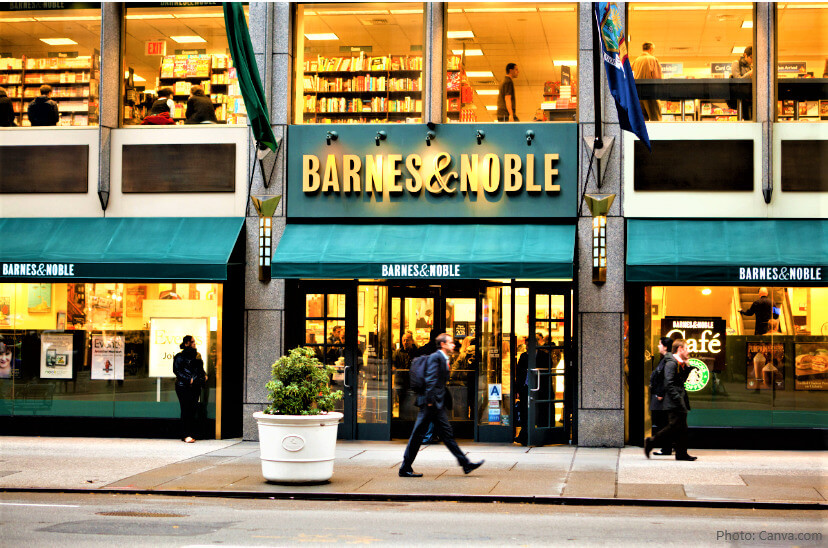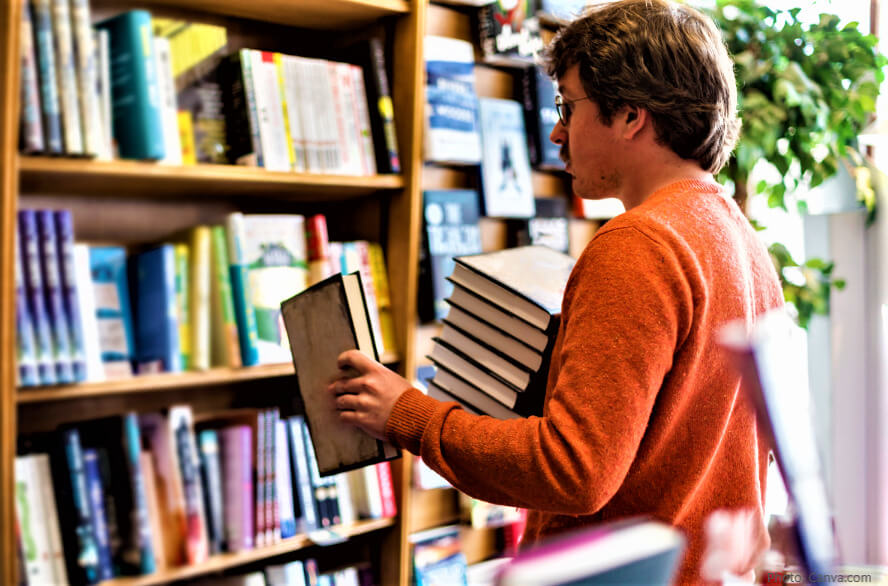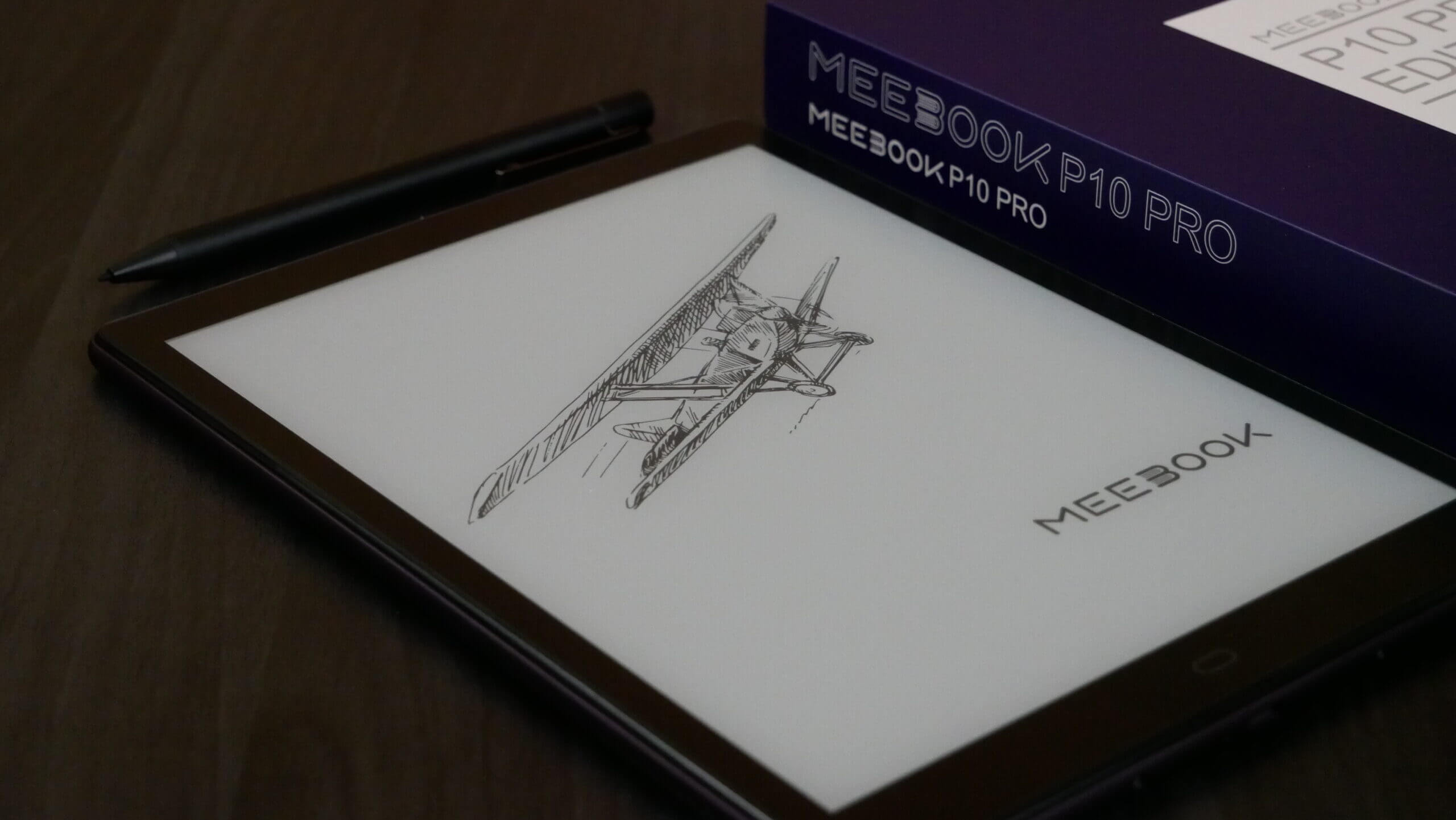
Barnes & Noble (B&N) is over 150 years old, so it’s understandable that it has had many different leaders and taken a variety of different directions over the decades. Not too long ago B&N was more like a huge box-store than bookshop. The entire first floor of New York’s Union Square store used to be taken up with many items- none of them books. A shopper needed to wade through aisle after aisle of puzzles, pillows, blankets, candles, mugs, cookies, and figurines just to get to the second floor where the books where. This needed to change.
Nowadays, “You’re not seeing much beyond books”, says CEO James Daunt shared during a recent interview with The Guardian. “I mean, there are other things, but it’s unequivocally book-driven.”
Although B&N is still the largest remaining US book chain with approximately 600 stores, each store now operates like an independent bookstore. When Daunt took over in 2019, one of the first things he did was connect with the local leadership staff and mangers in each individual shop. Knowing they would have more insight about their communities, Daunt empowered them to have direct input and more choice regarding their distinctive book selections so that they reflected local interests.
As opposed to Amazon, from where about 50% the all the print books in the US are sold, the aim of B&N is to offer an utterly different experience to consumers. “Amazon doesn’t care about books… a book is just another thing in a warehouse,” Daunt said to The Guardian, “Whereas bookstores are places of discovery. They’re just really nice spaces.”
At one time in the book selling game size was a huge advantage. Having massive stores that offered large selections of books and other items used to be a big draw for customers. However, nowadays there are too many overhead costs to up keeping such a large facilities, especially when places like Amazon carry most of these items at just a click-away. “The trick to being a big-box bookseller is to not be a big-box bookseller”, Daunt said in an interview with Axios.
Before Daunt took over, B&N had been running itself like a traditional corporate retailer, with each store exactly the same. “You have the same books on the table, the same books on the shelf, the same arrangement. You end up having stores full of books your customers don’t want to buy.” Daunt went on to explain that Barnes & Noble’s corporate leadership, “wanted to behave like conventional retailers. It wasn’t because they were stupid or because they were idle. It was simply that they didn’t understand bookselling.”
This type of same-same business model works great for other chain stores, such as Staples where regularity is key and customers have specific expectations for what they are looking for and where to find items in the stores. As Daunt explains, “At Staples, when you walk in, you definitely want consistency. You want to be able to buy your printer ink, your notepads, your pens. Staples basically runs the same store everywhere, and you as a consumer are happy because it’s the same everywhere.”
In order to set B&N apart from Amazon and its own chain locations, Daunt embraced the the practice of Book Curation. A curated store purchases books in a completely different way than a traditional big-box model. Previously, B&N left most of the decisions around which titles to order, promote, and showcase up to publishers. The problem was that publishers were not necessarily aware of what readers were looking for and didn’t take into account local interests.
According to Axios, about 70% of those books were never sold and ended up being returned to publisher. “That’s a staggering statistic when you think about it,” Daunt said, which is why he choose to put an end to that practice and focus on what readers really want. “Returns are a central judgment by your customers as to whether you’ve put the right books in front of them.”

Book curation is more personal; as if it were a person were stocking their own book shelves or choosing titles to give to a close friend. A curated bookstore is a place where a person can experience the warmth and wisdom of books. This type of bookstore is one that feels personal and welcoming when you walk in. Traditionally, this type of intimate bookstore experience was more likely to occur with smaller independent shops.
As writer Lauren Aratani shares, “Once upon a time, tension existed between Barnes & Noble and independent bookstores, as fictionalised in Nora Ephron’s film You’ve Got Mail, where Tom Hanks plays a character who runs a bookstore chain clearly inspired by Barnes & Noble opposite Meg Ryan, whose character owns an independent store. But Amazon has changed the game for bookstores, both chains and independent shops. These days Barnes & Noble is the little guy too. And the publishing industry is pleased to have a rival to Amazon.”
Daunt shares that before he was on the B&N book scene “it was identical everywhere. (Now) It doesn’t matter what table you’re looking at, you’re probably looking at a reasonably intelligent selection of books that feels appropriate for here,” Daunt says. “This will be different from Fifth Avenue, which will be different from the Upper West Side, and we’re just talking about [New York]”.
Since switching to a curated model, foot traffic in the stores has increased, book returns of unsold inventory are down, and Barnes & Noble has earned the top rating of 100% in the Corporate Equality Index, for the 15th year running.
An avid book reader and proud library card holder, Angela is new to the world of e-Readers. She has a background in education, emergency response, fitness, loves to be in nature, traveling and exploring. With an honours science degree in anthropology, Angela also studied writing after graduation. She has contributed work to The London Free Press, The Gazette, The Londoner, Best Version Media, Lifeliner, and Citymedia.ca.
